As an Amazon Associate I earn from qualifying purchases.
Here’s how to cut and cook fish wings, the collar and belly parts of fish like walleye, snapper and rockfish. Walleye wings are especially popular.
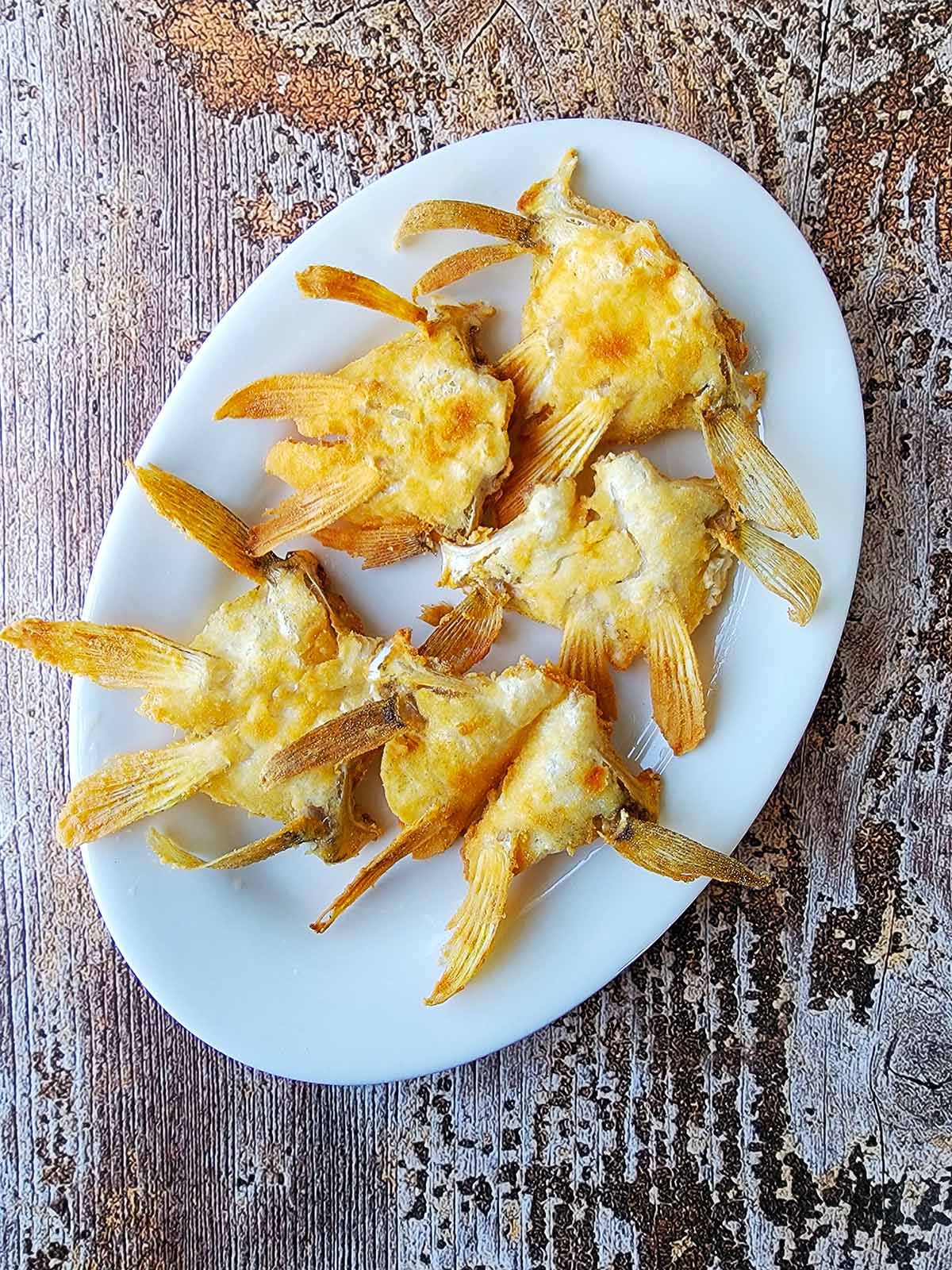
Using fish wings is a great way to get more out of the fish you bring home. They are fun to eat — it’s finger food, like chicken wings — the meat is texturally different from the rest of the fish, and it’s often fattier and richer. Wings, collars and throats are often the best part of a fish.
Depending on the fish and the region you live in, these can be called collars or throats, as in salmon or yellowtail collars, or snapper throats. Cod throats are a thing in New England. Walleye wings are the fish wings of choice in the Midwest.
The cuts are slightly different, but they are all from right behind the head of a fish, and usually include at least the pectoral or pelvic fins, and always the very front of the belly of the fish.
Generally speaking, collars include the arc of meat behind the gill plate and behind the fish’s head. Wings are below that, and include one or two sets of fins, while throats are only the bottom of the belly and may or may not include pelvic fins.
I use heavy-duty kitchen shears to remove them all. Many in the Upper Midwest simply remove walleye wings with the same electric knife they used to remove the fillets. Not being a fan of electric knives, I find the combination of a regular fillet knife plus shears works fine.
Most people cook fish wings either on the grill or they fry them. Both methods are great. I find that if you fry the wings, a very light coating of flour helps get things extra crispy because that flour will absorb any excess moisture; corn or potato starch is an excellent, gluten-free option.
Why leave the fins on? Well, they’re cool-looking, for starters. Second, once fried crispy, you eat the ends of the fins. Yes, you read that right. The ends of the fins get soft enough to eat, are ultra crunchy and not at all fishy in a bad way. You’ll thank me later.
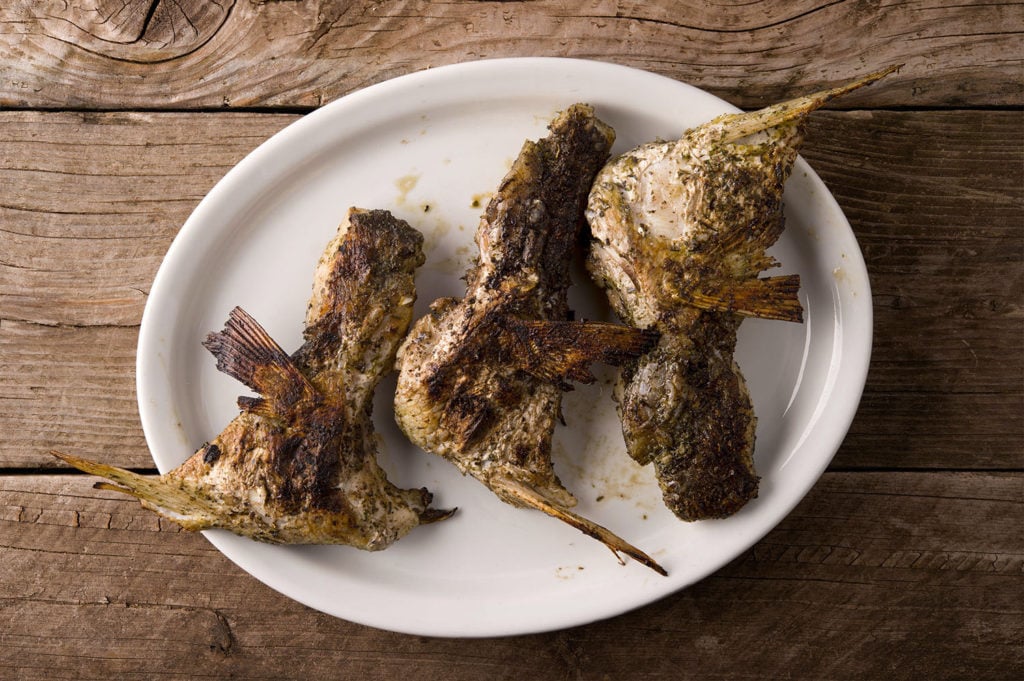
Sauces for Fish Wings
Basically anything goes. I’ve seen anything from Lawry’s lemon pepper and butter to teriyaki sauce, to old-school Buffalo wing sauce to barbecue sauce. Here are some good ones for fish wings:
- I love tossing the cooked wings or collars with a honey mustard sauce, which is great on chicken wings, too.
- A Japanese ponzu sauce works fantastically, especially with salmon or trout collars.
- I marinate collars and fish wings sometimes in a ponzu-like sauce. I do this especially for hamachi kama, yellowtail collars. Any large collar works.
- A very simple, Mediterranean-style olive oil, herb, and lemon marinade is great, too. This is my go-to for all lean fish collars, like from striped bass or big snapper.
- Another good option is a straight-up barbecue sauce. I am fond of this Chinese-style char siu barbecue sauce.
Serving and Storing
Fish wings, collars, etc. don’t keep well. They’re oddly shaped, so while you can freeze them, they tend to break seal in vac bags, and their shapes lend themselves to air pockets however you store them, which leads to freezer burn.
My advice is celebrate your harvest with wings and collars right after fishing. Sure, they’ll keep several days in the fridge, but eat them fresh. You’ll like them better that way.
If you liked this recipe, please leave a ⭐️⭐️⭐️⭐️⭐️ rating and a comment below; I’d love to hear how everything went. If you’re on Instagram, share a picture and tag me at huntgathercook.
Fish Wings
Ingredients
- 2 pounds fish wings, such as walleye wings
- salt
- 1/2 cup flour or corn starch, or potato starch
- oil for frying
- Sauce of your choice (see headnontes above)
Instructions
- Optional Step: Mix 1/4 cup salt with 1 quart of water until the salt dissolves. Brine the fish wings or collars in this in the fridge for 4 to 12 hours. I like to do this before I go to bed, then drain off the brine when I wake up.
- Alternatively, you can just salt the wings well and set aside while you heat about 1 inch of oil in a large pan. You can also use a deep fryer.
- Lightly flour the fish wings, pressing it in. Set them aside as the oil heats.
- If you have lots of wings to fry, set up a warming station in a 300°F oven by putting a cookie sheet in that has a cooling rack set above it. As the wings are fried, set them on this rack in the oven. This will keep them light and crispy so they don't get soggy on paper towels.
- When the oil hits 350°F, fry the wings, starting with skin side up. The wings will arc upwards. Press them down with your tongs or spatula until they relax and flatten, maybe 20 seconds. Fry until golden brown, about 4 to 8 minutes per side.
- If you're using a sauce, toss the wings in the sauce in a large bowl right before you serve them.
Nutrition
Nutrition information is automatically calculated, so should only be used as an approximation.
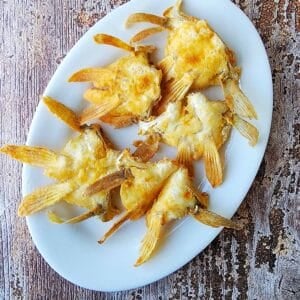
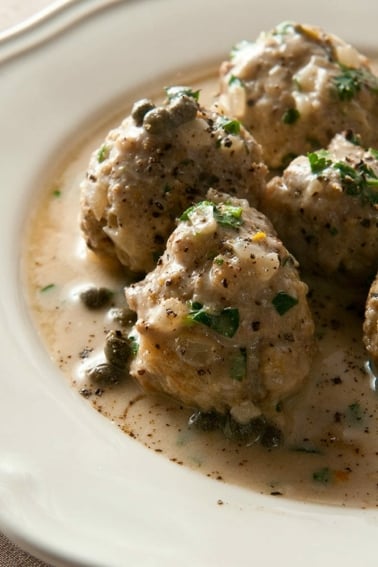
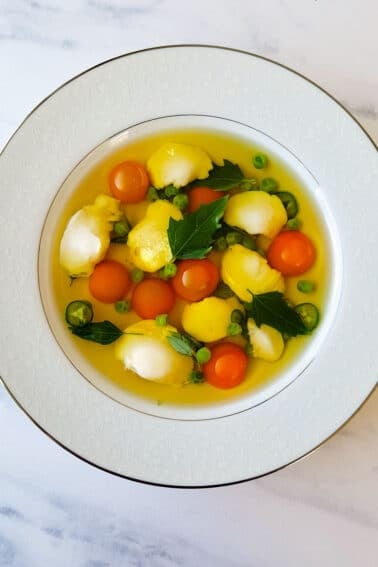
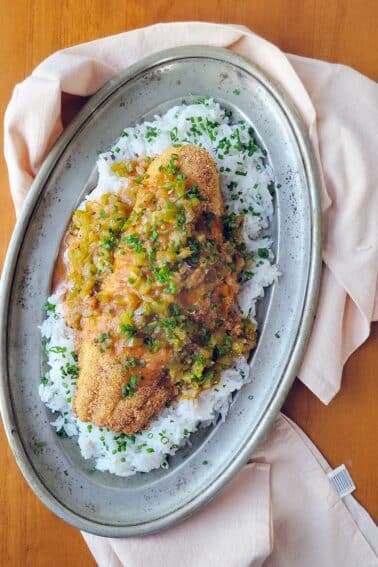
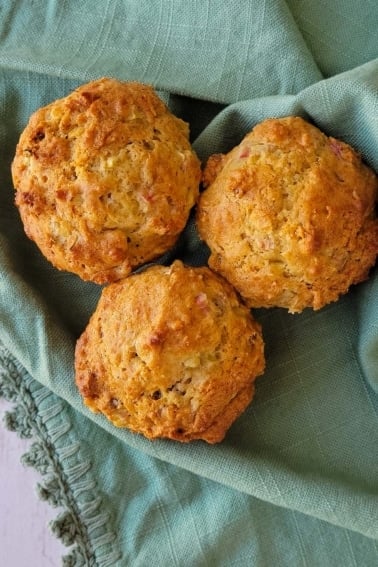
I fried up some wings from fresh Vermilion Red Rock Fish, dipped in flour and applied a heavy salt and pepper coating. No sauces or dips. It made for a great fun finger-food lunch for me and the wife!
I was very surprised to see these wings. Never heard of them other than as collars which normally do not include all these fins. Last week while filleting Dusky rockfish caught out of Seward Alaska I just couldn’t throw all of that nice belly meat away so, for the first time, saved pieces that look a lot like these. Brined in a bit heavier salt brine with garlic for 20 minutes, dried an hour and smoked an hour on a pellet grill. Very good! Even the crispy fin tips! Still enjoying them cold. I look forward to trying them fried. Thanks for all your great recipes!
I love utilizing all the fish! I’ve made fish ribs out of large spade fish.
Are there any fish you should avoid making this way? I love black cod, but the bone structure is a little unusual. Shad is bewildering. I assume some fish the fins are not great for this.
Hey Hank: Love your stuff. I have a recipe folder under your name, and it is my go-to place for a lot of my cooking. I also own most, or maybe all of your books. I have an overabundance of largemouth bass in my pond and need to cull a couple dozen. I will leave the biggest (for genetic reasons) and generally take fish in the 2-4 pound range. I’ll definitely give the fish wings a try using those bass.
Just a comment on freezing fish. As a kid (about 60 years ago) we took a two week family trip to a lake in Canada every summer. That was long before those lakes became polluted by people, weekend homes and ski boats) We fished every day and brought home coolers full of frozen fish and frog legs. Our method of preserving them for the long drive home and to prevent freezer burn after we got home was to put the fillets in a bag or other container add some water to cover the fish, remove any air bubbles and freeze. Modern zip lock bags make this really easy. It only takes a few ounces of water in a quart size zip lock. Just be sure to squeeze all of the air out. Ann added bonus is that the thin flat bags stack well in the freezer.
Hank, every so often, I audibly cheer one of you recipes (much to the dismay of those in the immediate vicinity.)
Fish collars are one of those neglected sources of delicious protein that a lot of folks just haven’t considered. If you pull up videos of people cleaning fish, you see the collars going into the bucket with the rest of the frames and guts.
At the risk of sounding like a know-it-all, I’ve been saving collars from walleyes and steelhead for years. They’re simply delicious.
As far as terminology goes, let’s travel to Newfoundland. There, they’re referred to as “napes”. While standing in front of a fish monger’s counter in Rocky Harbour, I spotted a tray-full of cod collars that looked particularly good, and asked the monger for a dozen. He replied, “Collars?” I said, “Yes!”, and pointed to them. He the replied (seeming somewhat perturbed), “You mean da napes?” I said, “Yes.” He then said something like, “Eh, calls dem watcha likes!” After that, we simply referred to him as the “surly monger”!
Joe: HAHAHAHAHA. I love Newfies!
Learned about wings several years ago from Minnesota friends and enjoyed them ever since. Can’t believe the number of walleye wings that we used to throw away. Thanks for letting other fishermen know of this great treat; I like them better than cheeks. Have not had problems freezing in vacuum packs.
Hank,
A new recipe for me!
Heading to the coast in mid September to fish – if lucky will try the recipe then.
Have a great week!
Tad